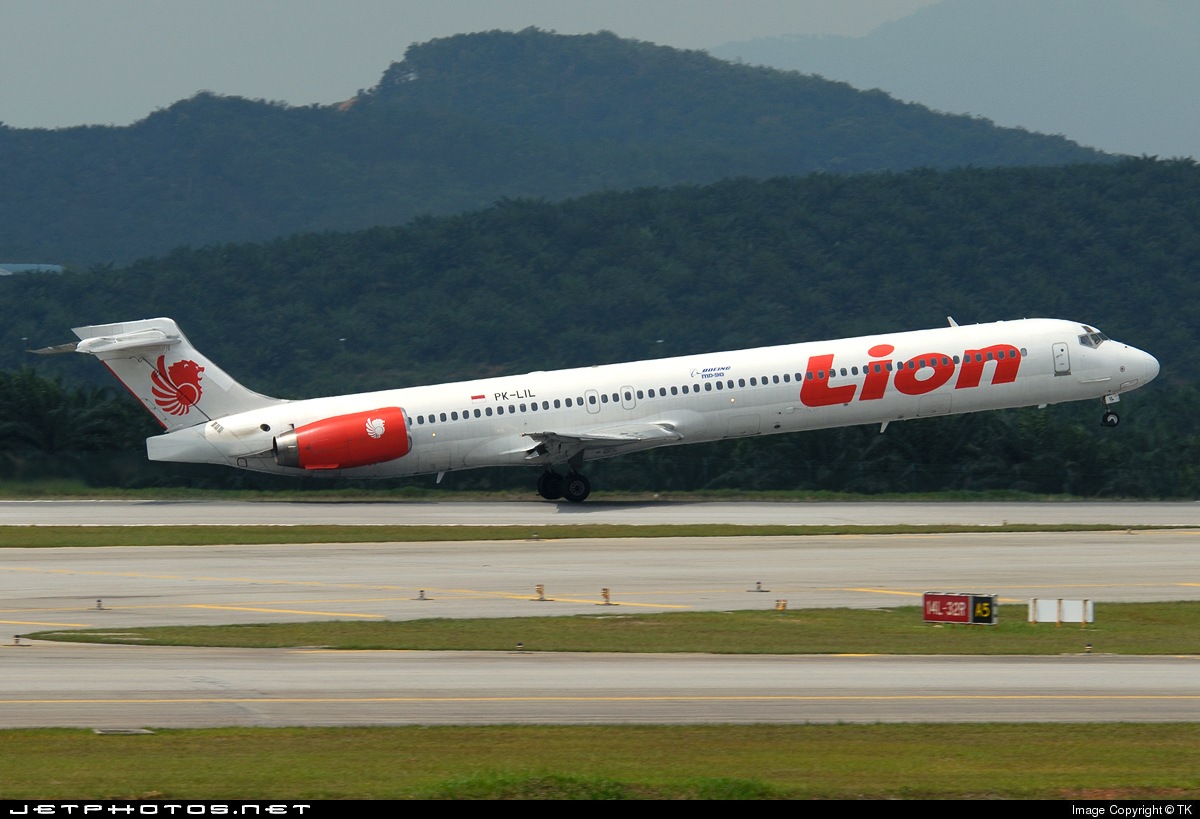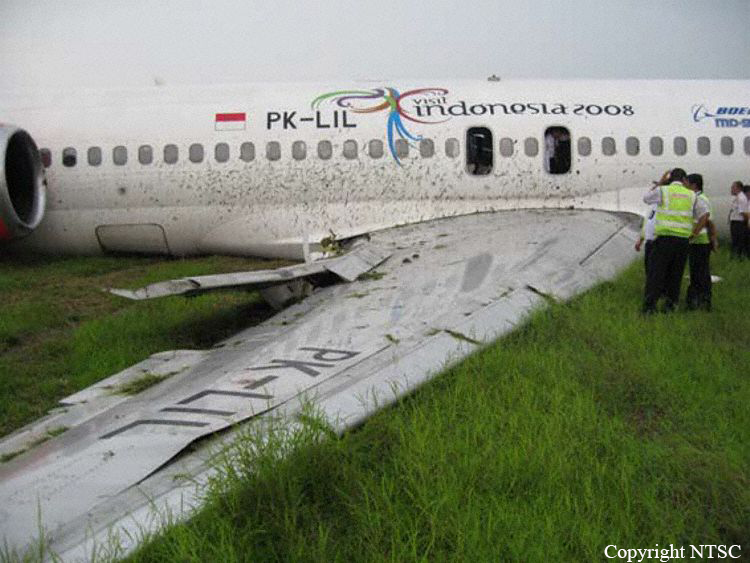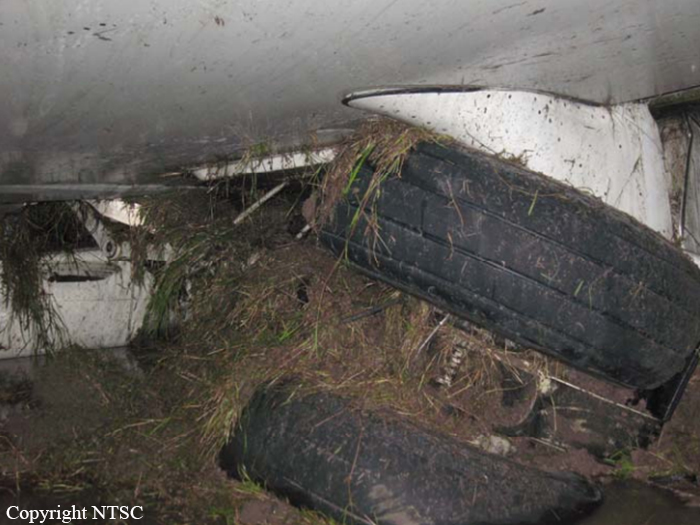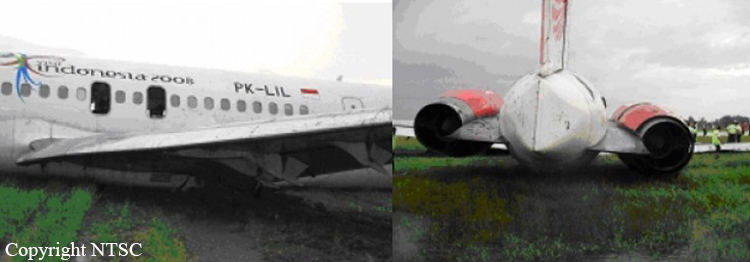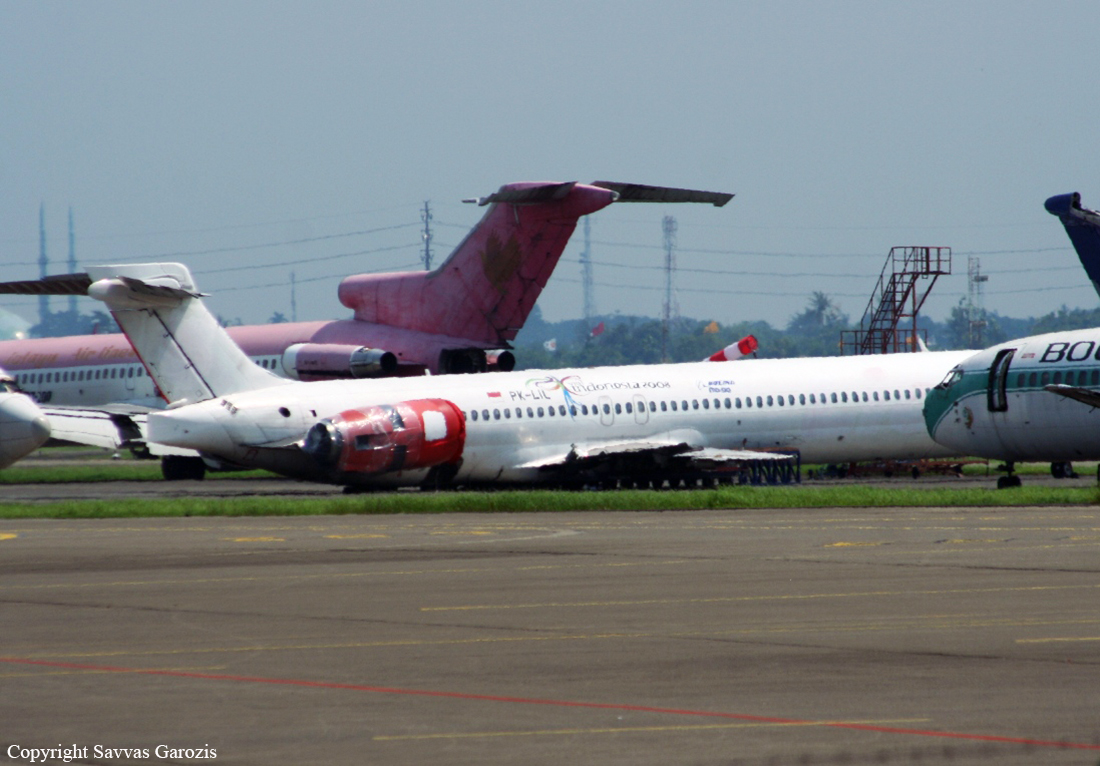Country
Crash of a McDonnell Douglas MD-90-30 in Riyadh
Date & Time:
May 8, 2009 at 1558 LT
Registration:
HZ-APW
Survivors:
Yes
Schedule:
Jeddah - Riyadh
MSN:
53513/2257
YOM:
1999
Flight number:
SVA9061
Crew on board:
7
Crew fatalities:
Pax on board:
0
Pax fatalities:
Other fatalities:
Total fatalities:
0
Circumstances:
A Saudi Arabian Airlines MD-90 was substantially damaged during a runway excursion accident Riyadh (RUH). The seven crew members escaped unhurt. The airplane operated on a repositioning flight from Jeddah. During the flight, the captain discussed the use of manual spoilers during landing with the first officer. He further stated that; as he "had only around 400 hours in the aircraft" as a captain, he wanted to "see the effect' of landing with manual spoilers. He further explained that the flight provided an opportunity to "do it manually" (use manual spoilers) as it was a repositioning flight and, the weather and dry runway conditions were ideal. As such, he discussed the procedure with the first officer and elected to land with the auto ground spoiler system unarmed. The flight was uneventful. During the approach to Riyadh the Landing Checklist was completed, which included the arming of the auto ground spoiler system for landing. After the Landing Checklist was completed, the captain disarmed the auto ground spoiler system with the intention of applying manual ground spoilers after landing. The auto braking system was also not armed prior to landing. The final approach and touchdown to runway 15 Left at Riyadh were uneventful. The touchdown airspeed was 135 knots calibrated air speed (CAS). On touchdown, the captain manually extended the spoiler/speed brake lever, but did not latch it in the fully extended (EXT) position (fully aft and latched upwards). The captain then removed his right hand from the speed brake lever in order to deploy the thrust reversers. The first officer noted the movement of the spoiler/speed brake lever and called "Spoilers Deployed". Since the spoiler/speed brake lever was not fully pulled aft and latched upwards, the lever automatically returned to the forward retracted (RET) position. This movement of the spoiler/speed brake lever was not noticed by the captain and the first officer. In response, the ground spoilers re-stowed before being fully deployed and, a speed brake/flap configuration (SPD BRK/FLP CONFIG) Level 1 Amber Alert occurred. This alert occurred as the aircraft was not yet fully weight on wheels (WOW) and the aircraft still sensed a flight condition with speed brakes deployed and flaps extended beyond six degrees. Six seconds after touchdown on the right main landing gear, the nose gear touched down and the aircraft transferred to a ground condition (WOW on nose gear and main wheel spin up). The SPD BRK/FLP CONFIG alert extinguished when the nose gear oleo actuated ground shift on landing. After touchdown, the aircraft banked to the right and began to drift right of the runway centerline. In response, he applied left rudder, deployed the thrust reversers and applied left aileron. But this did not have any noticeable effect. The captain saw the approaching G4 taxiway exit and in an attempt to keep the aircraft from leaving the runway surface beyond the G4 taxiway exit, he decided to direct the aircraft towards the taxiway. He then applied a right rudder input which caused the aircraft to commence a rapid sweeping turn to the right towards the G4 taxiway exit. The aircraft left the runway at high speed, traversed the full width of the G4 taxiway, and exited the surface at its southern edge. The aircraft then entered a sand section and travelled the distance infield between the edge of the G4 taxiway and the adjacent section of taxiway GOLF. The left main landing gear collapsed during this time. The aircraft came to rest on taxiway GOLF. There was no post impact fire.
Probable cause:
Cause Related Findings
1. The Captain decided to land with manual ground spoilers when the auto ground spoiler system was fully operational.
2. The initiative by the Captain to conduct this improvised exercise contravened the Standard Operating Procedures (SOPs) and the Flight Operations Policy Manual (FOPM).
3. The auto ground spoiler system was disarmed prior to landing.
4. The spoiler/speed brake lever was partially applied manually after landing.
5. The spoiler/speed brake lever was released before it was fully extended and latched.
6. The spoiler/speed brake lever automatically retracted as per design.
7. The ground spoilers never fully deployed.
8. The loss of lift and aircraft deceleration were greatly reduced by the lack of ground spoiler deployment.
9. Brakes were not used in an attempt to control or slowdown the aircraft.
10. The Captain applied a large right rudder input with the intention of directing the aircraft onto the G4 taxiway exit.
11. The aircraft exited the runway at high speed and was travelling too fast to successfully negotiate the right turn onto the G4 taxiway.
1. The Captain decided to land with manual ground spoilers when the auto ground spoiler system was fully operational.
2. The initiative by the Captain to conduct this improvised exercise contravened the Standard Operating Procedures (SOPs) and the Flight Operations Policy Manual (FOPM).
3. The auto ground spoiler system was disarmed prior to landing.
4. The spoiler/speed brake lever was partially applied manually after landing.
5. The spoiler/speed brake lever was released before it was fully extended and latched.
6. The spoiler/speed brake lever automatically retracted as per design.
7. The ground spoilers never fully deployed.
8. The loss of lift and aircraft deceleration were greatly reduced by the lack of ground spoiler deployment.
9. Brakes were not used in an attempt to control or slowdown the aircraft.
10. The Captain applied a large right rudder input with the intention of directing the aircraft onto the G4 taxiway exit.
11. The aircraft exited the runway at high speed and was travelling too fast to successfully negotiate the right turn onto the G4 taxiway.
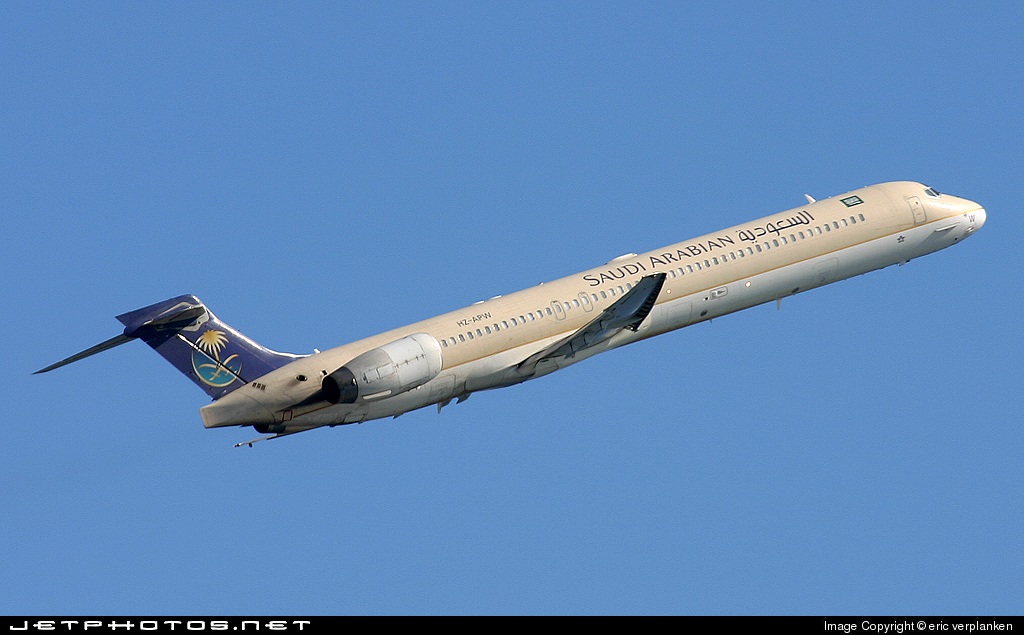
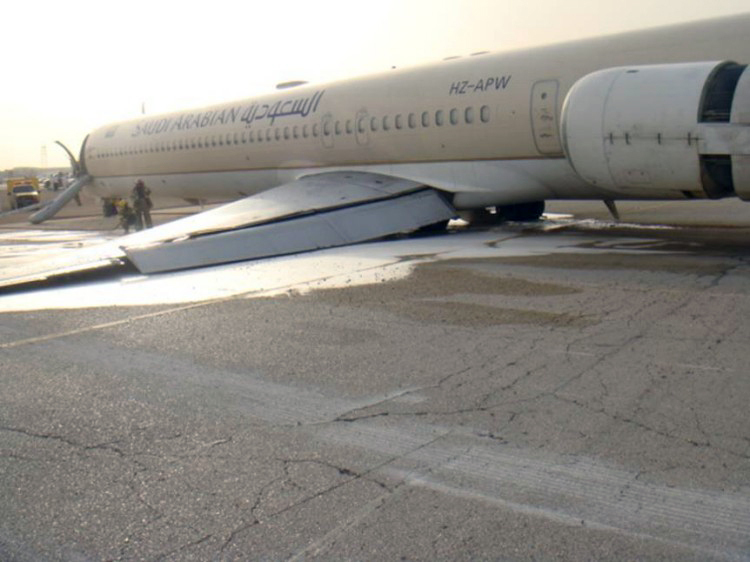
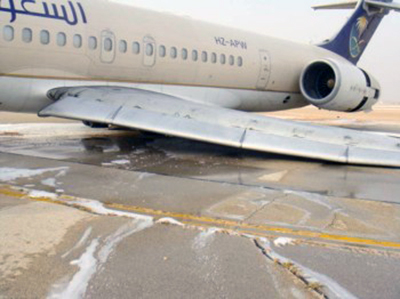
Crash of a McDonnell Douglas MD-90-30 in Jakarta
Date & Time:
Mar 9, 2009 at 1535 LT
Registration:
PK-LIL
Survivors:
Yes
Schedule:
Ujung Pandang - Jakarta
MSN:
53573/2182
YOM:
1997
Flight number:
LNI793
Crew on board:
6
Crew fatalities:
Pax on board:
166
Pax fatalities:
Other fatalities:
Total fatalities:
0
Captain / Total hours on type:
5000.00
Copilot / Total hours on type:
800
Aircraft flight hours:
18695
Aircraft flight cycles:
14507
Circumstances:
Lion Mentari Airline (Lion Air) as flight number LNI-793, departed from Sultan Hasanuddin Airport (WAAA), Makassar, Ujung Pandang, Sulawesi at 0636 UTC for Soekarno-Hatta International Airport (WIII), Jakarta. The estimated flight hour from Makassar to Jakarta was 2 hours. The crew consisted of two pilots and four flight attendants. There were 166 adult passengers. The copilot was the pilot flying for the sector, and the pilot in command (PIC) was the support/monitoring pilot. During the approach to runway 25L at Jakarta, the weather at the airport was reported as wind direction 200 degrees, wind speed 20 knots, visibility 1,000 meters, and rain. The PIC reported that he decided to take over control from the copilot. The PIC later reported that he had the runway in sight passing through 1,000 feet on descent, and he disengaged the autopilot at 400 feet. At about 50 feet the aircraft drifted to the right and the PIC initiated corrective action to regain the centreline. The aircraft touched down to the left of the runway 25L centerline and then commenced to drift to the right. The PIC reported that he immediately commenced corrective action by using thrust reverser, but the aircraft increasingly crabbed along the runway with the tail to the right of runway heading. The investigation subsequently found that the right thrust reverser was deployed, but left thrust reverser was not deployed. The aircraft stopped at 0835 on the right side of the runway 25L, 1,095 meters from the departure end of the runway on a heading of 152 degrees; 90 degrees to the runway 25L track. The main landing gear wheels collapsed, and still attached to the aircraft, were on the shoulder of the runway and the nose wheel was on the runway. The passengers and crew disembarked via the front right escape slide and right emergency exit windows. None of the occupants were injured
Probable cause:
The aircraft was not stabilized approach at 100 feet above the runway.
Final Report:
